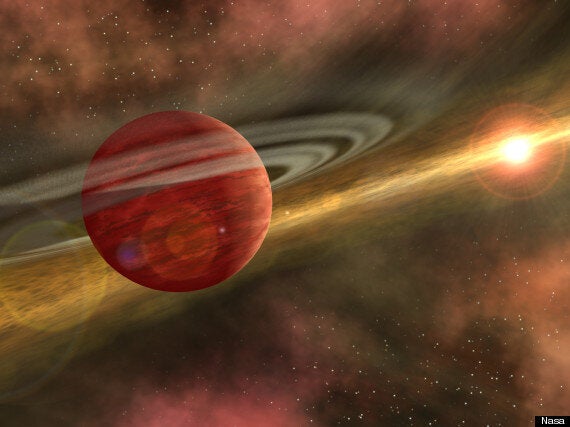Astronomers have found a planet which shouldn't exist.
The planet, HD 106906b, is far larger than anything in our solar system at about 11 times the mass of Jupiter.
But the truly weird thing about the planet is not its mass, but its distance from its star. HF 106906b orbits its host star at about 650 times the distance of the Earth to our Sun.
And that's a problem, because current theories of planet formation can't really explain how it managed to get there.

Above: artist's impression of a similar exoplanet
"This system is especially fascinating because no model of either planet or star formation fully explains what we see," said Vanessa Bailey, from the University of Arizona, who led the team, according to Phys.org.
Usually, it is thought, planets either form close to their stars around small rocks similar to asteroids, or from a fast collapse of a distant disc of material further from the star itself.
But neither model works for this world - it's too far for the first, and too heavy for the second. Instead researchers will have to find a new method - potentially one related to the way in which binary systems, with two stars, form independently and then end up in an orbit around each other.
The team added in its paper that the planet is still very young - about 13 million years, as seen from Earth - and is still glowing from the heat of its formation.
"Systems like this one, where we have additional information about the environment in which the planet resides, have the potential to help us disentangle the various formation models," Bailey said.
"Future observations of the planet's orbital motion and the primary star's debris disk may help answer that question."